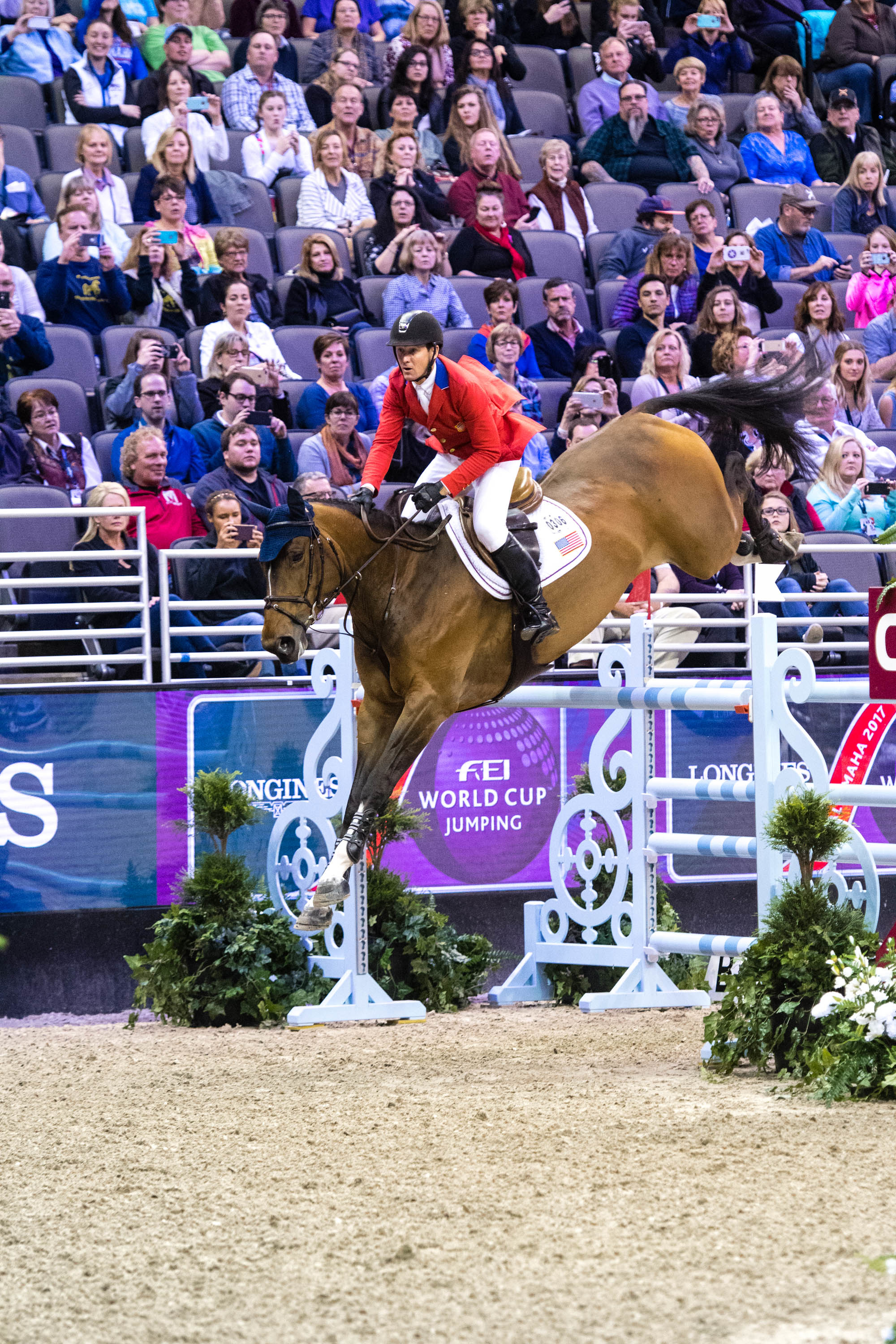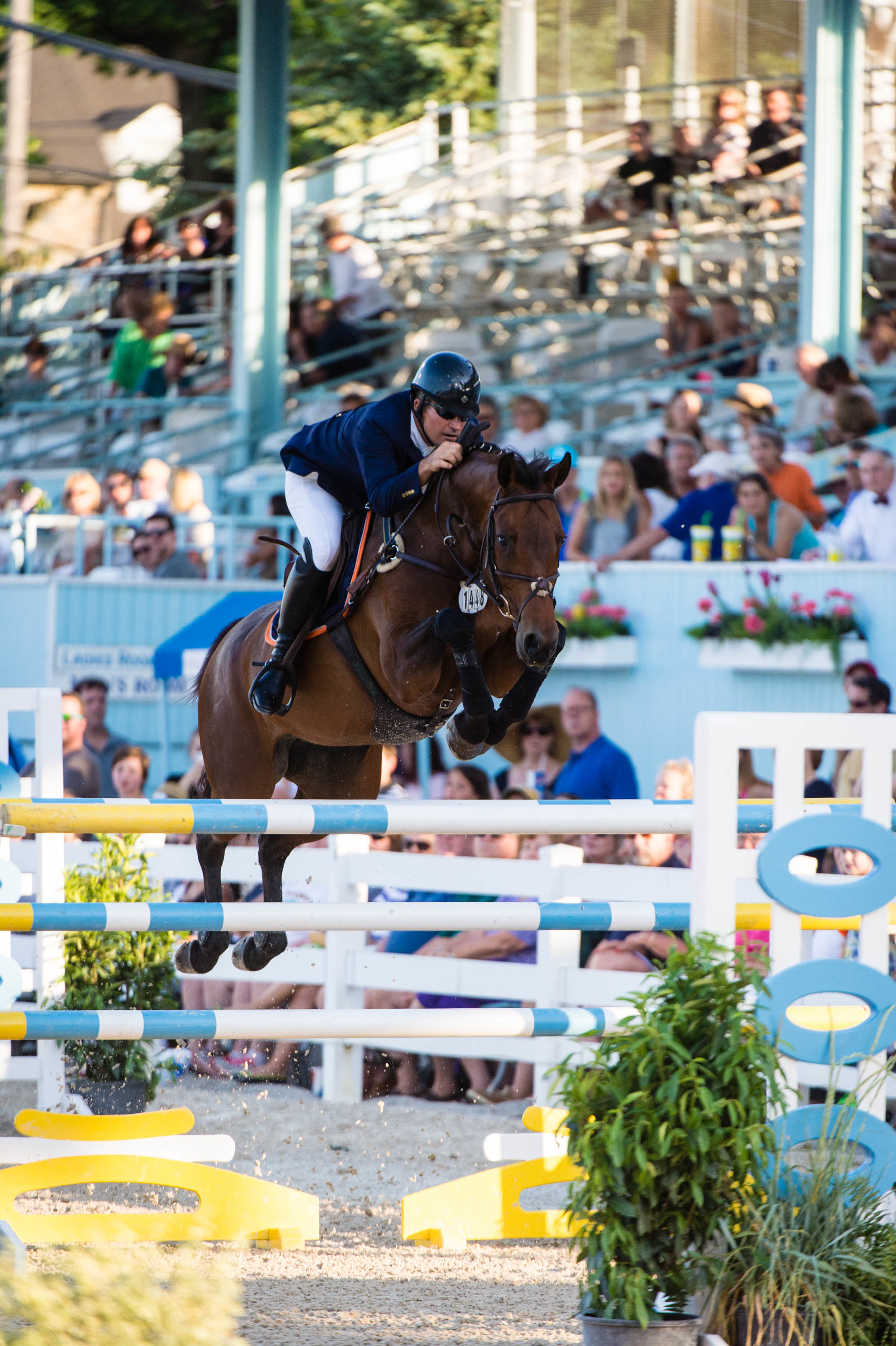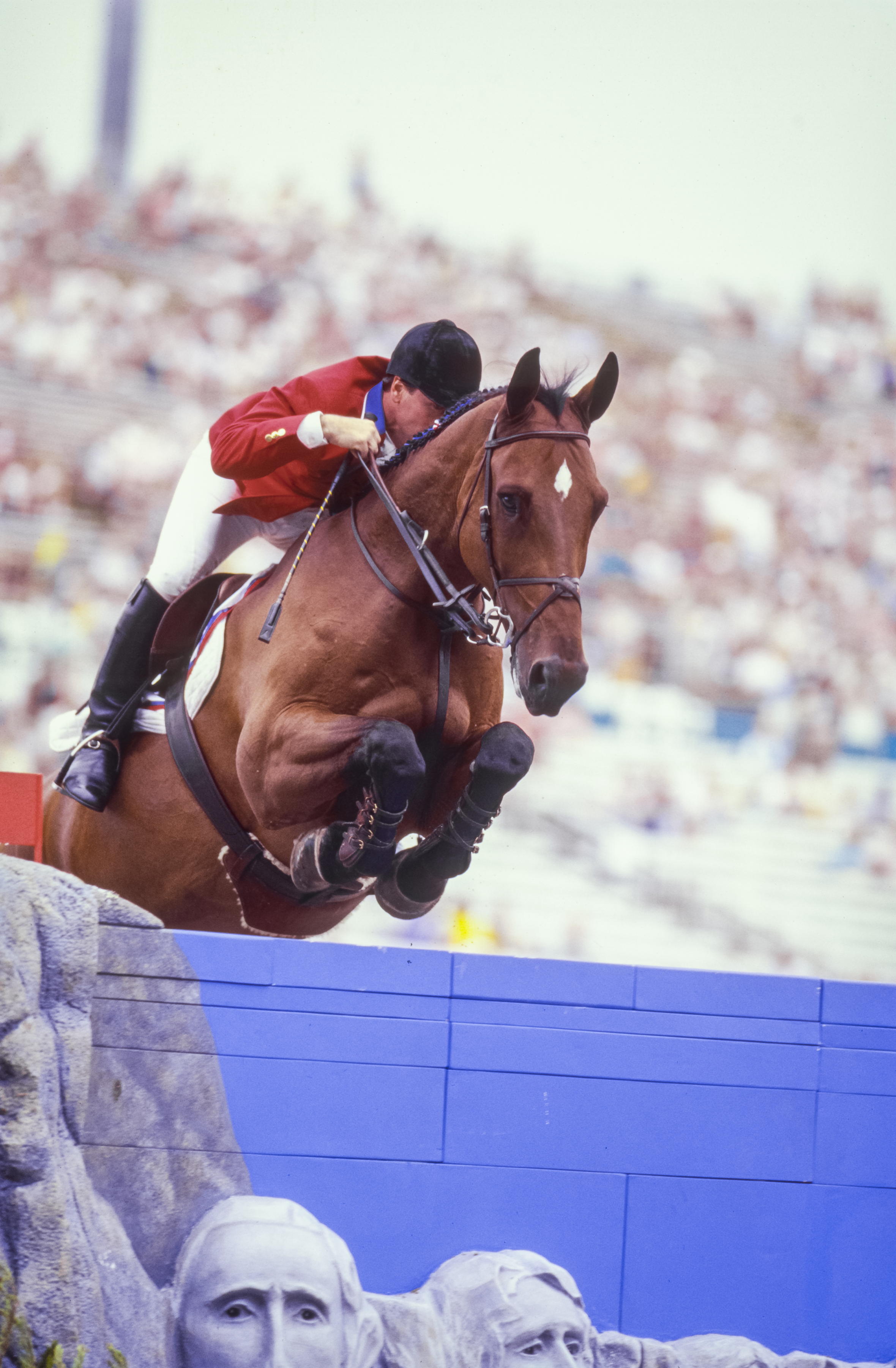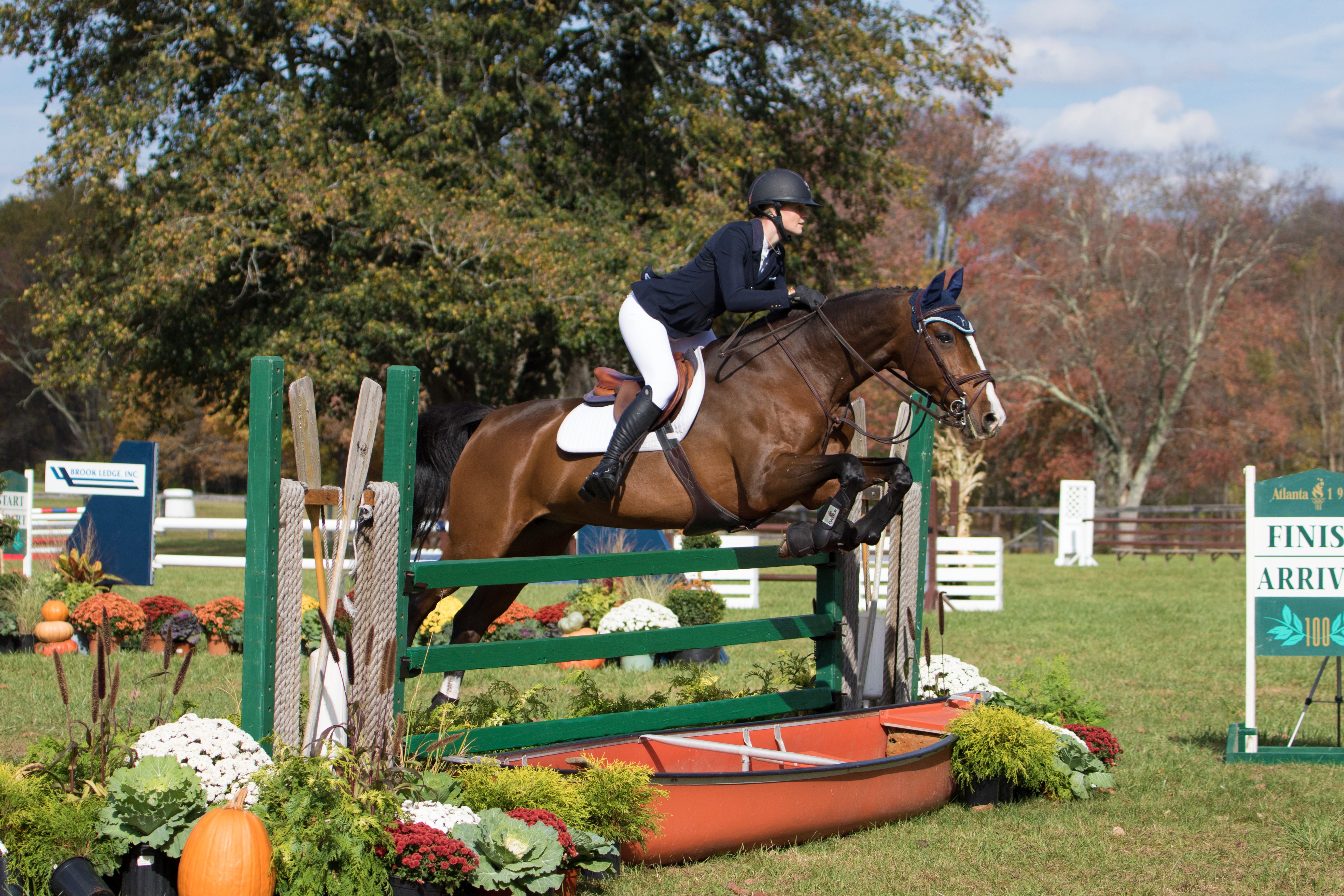
Have you ever had a perfect ride, when every element fell magically into place—the distance to every jump came up just right, each dressage movement flowed effortlessly from the previous one to the next or every moment of a trail ride was pure bliss? And all the while, you and your horse were so in tune that you merely had to think what you wanted to do next and he did it? This is what we call the “sweet spot.”
People talk about finding the sweet spot—or being “in the zone”—all the time in other sports. In baseball, it’s that moment when a batter hits a pitch perfectly, sending the ball sailing into the outfield in the exact direction he intended. In soccer, it’s the goal-scoring kick. In golf, it’s the swing that drives the ball straight, true and far.

Sometimes the sweet spot is momentary—perhaps lasting just a split second, as in the case of the batter hitting a fast pitch. Many athletes find the sweet spot only now and then. An average golfer, for example, might hit that awesome “career drive” one out of 20 swings, whereas a professional stays in the sweet spot for six, 10 or 14 holes at a time. The best athletes can prolong the sweet spot over minutes, hours, days and even years. Think of pro basketball player Steph Curry of the Golden State Warriors, who stayed in the sweet spot for two entire seasons to earn the NBA’s Most Valuable Player award twice. Or think of McLain Ward and HH Azur in the 2017 Longines FEI World Cup™ Jumping Final, dominating all three phases of the competition. They never put a foot—or hoof—wrong.
In horseback riding, finding the sweet spot is twice as satisfying because there are two of you. It’s like spending a wonderful evening with one of your best friends. You know each other so well that you can finish each other’s sentences. You “get” the same jokes, love the same stories and are immensely comfortable together. There’s such a deep understanding between you that each of you feels like you know what the other is thinking.
This is the same happy place you experience when you find the sweet spot with a horse. He knows where you want to go and what you want to do without you having to tell him. He is an extension of you and you are an extension of him. You can sense his physical, mental and emotional states. You know if he’s comfortable or not, if he’s nervous or scared. You’re in total sync. Instead of battling each other, you’re acting as one, riding against the clock or to outscore your last performance—or just to enjoy the best part of the day. It’s the most awesome feeling! And it’s why we do this sport.
Whether you’re riding in an equitation class, performing a dressage test, jumping a grand prix course, galloping cross country or trail riding at home, everyone is always striving to find the sweet spot. But there’s more to it than just getting all the mechanics right. Yes, you must have the correct position and need to know how to balance and move all of your body parts with the motion of the horse while still being able to coordinate them with one another to influence him. For whatever discipline you ride, you must understand the geometry and goals of every element of it—whether that’s riding an accurate track on a bending line, adjusting stride length or producing a perfectly shaped serpentine. To truly excel, your horsemanship must transcend correct riding technique. You need an understanding and sense of how to communicate with your horse at all times, whether you’re on his back or on the ground—loading him into a trailer, crossing a creek, jumping a course or asking him to stand quietly while a storm approaches.

Some riders are fortunate enough to be born with this instinct. Successful jumper riders like two-time Olympic gold medalist Beezie Madden, top show jumper Aaron Vale and 2017 USHJA International Hunter Derby champ Victoria Colvin have a remarkable talent for connecting to the horses they ride, often establishing that connection in a surprisingly short amount of time. Their mounts always seem happy and willing when they’re in the saddle. How do they do it? Aaron’s website says it all: It’s thinkslikeahorse.com. And he does! He thinks like a horse.
Own Your Education
Obviously, not everyone is born with this talent to seemingly read horses’ minds. But that doesn’t mean others can’t develop similarly good instincts and communication skills. You just have to find them in yourself. Good-quality instruction can help, but teaching riders how to “feel” is much harder than teaching the basic mechanics of riding. The best instructors can try to paint a picture of what it should feel like and give you tools and exercises to try to connect with that feeling. But what works for one student may be different from what works for another.
Ultimately, you have to take ownership of your education. The first step is to figure out your individual learning style: Do you learn best by listening? By watching? By doing? You can supplement your regular instruction by recognizing and tapping into these strengths.
For example, if you’re a visual learner, pay close attention to any good imagery you encounter. To work toward an “educated seat”—a seat that sticks to the saddle like a fly on fly tape, blending into the horse’s back while also influencing his muscles to affect his performance—when you sit the trot, you may find it easier to pretend that you’re easing into a tub of hot bath water. This will help you sink into the saddle while you focus on relaxing your midsection from your rib cage to your hips, imagining that it’s made of Jell-O or marshmallows. Once you feel yourself moving in the rhythm of the gait, you can then stretch your upper body tall and use your weight in a positive manner to influence your horse.
I personally draw on a combination of learning methods to continually improve my performance. While I’m on course, I try to produce the canter, rhythm, balance, takeoff spots, etc. that my experience and instincts tell me are ideal for helping that particular horse go clear. As I ride, I make mental notes of how each of those variables feels. Later that evening, I review the video of the round to verify that what I see is what I felt. Sometimes it’s not. For example, my tendency has always been to give horses too much room in front of fences, so I often have to remind myself to get deeper to the jumps. Sometimes I feel like I’m succeeding only to see later in the video that I wasn’t quite close enough.
In addition to those key pieces, I incorporate feedback from other professional riders and trainers whose observations I trust and value. If someone like George Morris or my brother Mark says I could have given a horse more support off the ground or ridden him straighter, I factor that into my evaluation. Then I wrap all this information together into a new plan and execute it—over and over again. The doing is what gets you to perfection.
Which particular aspects of the ride you pay the most attention to depend on what your goal is. Even though we all want to end up in the same happy place, the exact ingredients that go into finding the sweet spot vary from discipline to discipline and day to day. If you’re entering the ring for a Junior Jumper classic, your goal will be different than it was when you schooled on the flat at home four weeks ago.
The process is also different on different horses. You won’t find the sweet spot with a hot Thoroughbred in the same way you would with a more mellow warmblood. Every ride is a unique collection of balancing acts: between being strong and soft, working and relaxed, disciplined and generous, predictable and spontaneous, and so on. In the end, the one goal that all riders share is of earning the horse’s trust and forming a strong bond with him.
I was reminded of this in 2012 while developing an Irish horse named Lincourt Gino. He had a very good head on his shoulders, but was also really sensitive. I started him in the 1.30-meter classes in January and debuted him at the grand prix level in May. As we got to know each other, I realized how important it was to build up his confidence in the warm-up before a big class. I learned that allowing him to loosen up with a nice big gallop—rather than pressuring him to do lots of collection and transitions—and then gently putting him together prepared him to perform his best. Relaxation, suppleness, rhythm and confidence were the key ingredients for him.
By August, I was reliably tapping into this formula and he was responding like an ATM: always finishing in the money. We ended the season by winning the inaugural American Gold Cup at Old Salem Farm, besting three horses who had either competed in the Olympics or have since done so.
Listen to Your Horse
Another key factor for finding the sweet spot is learning how to listen to your horse. Many people get in the saddle and immediately start dictating: “Do this! Do that! Go here! Go there!” Try hearing what your horse has to say. How does he feel physically? How is he mentally and emotionally? What seems easy to him and what seems hard? Is he comfortable or uncomfortable?
To take this listening exercise to the next level, periodically change your schooling environment. Horses thrive on routine, but exposing them to different surroundings now and then and observing how they respond can often be beneficial. For example, if you typically school in an arena, try to find a nice open field to ride in one day. After warming up, gently ask your horse to lengthen his stride at the trot. Then gently ask him to collect it. Follow that up with a small leg-yield in one direction and then the other. How does he respond? How is his reaction different from his normal behavior in the ring?
This new knowledge will help to strengthen your bond with him. It should also come in handy in future competitions. When you enter the ring, check in with how he feels. Before you pick up the canter, take a nice deep breath. Your horse will probably do the same! And he’ll be more relaxed and supple as a result, which will make the rest of your performance that much better. This is how you turn the mechanical process of executing a course (or dressage test or whatever discipline you pursue) into an art form. Instead of feeling as if you’re rigidly going through an instruction manual, you’ll breathe and feel and follow your instincts.
Listening to your horse is another important balancing act, though. If you let him do all the talking, he may take over the ride. Try to think of him as a child or a pet who needs tender guidance and instruction. Listen to his concerns, but then try to address them with constructive exercises—flatwork, gymnastics, etc.—to educate and develop his performance.

Ride in the Moment
One of the most important lessons to learn about the sweet spot is that it’s a moving target. It changes from day to day, week to week and year to year. Horses are just like us: They have different moods and different physical states. The horse you’re on today won’t be the same horse he was yesterday. I learned this with my Olympic partner Crown Royal Legato. At our shows before the Olympics, I typically competed him in an open warm-up jumper class on Friday in preparation for the grand prix on Sunday. He often performed really well in the Friday class, so I would get on him on Sunday and try to revisit that same state and karma. But that often didn’t work because he didn’t feel the same way on Sunday that he’d felt Friday. So the ride I tried to give him was too soft or too strong or otherwise not suited to how he was feeling.
I had another horse who required completely different warm-ups depending on how he was feeling on any given day. He might jump with the power of King Kong one day and then feel nervous and insecure just three days later. On those days, instead of going straight to a 1.20- or 1.30-meter oxer, I’d start with a smaller vertical with bigger ground lines and would jump as many as 10 to 14 fences altogether, making the oxers slightly smaller and narrower than usual. Then I’d finish the warm-up with a bigger vertical instead of an oxer.
On other days, the same horse might show up high as a kite. So I’d canter four laps around the ring in either direction to take the edge off, acting as a “human turnout” or “human longe line” for the horse. If he was still too fresh, I’d make a few more laps before getting to work.
The very same horse sometimes arrived at the ring almost lackadaisical. On those days, I kept his warm-up short and sweet to conserve his energy, maybe only jumping a total of four or five fences before going into the ring.
That’s how I learned the value of riding the horse that’s underneath you today. Be in the moment. Don’t get hung up on how your horse felt yesterday or two days ago.
If you’re a typical rider with a busy schedule full of work, school and/or family responsibilities, you may find riding in the moment challenging at times. On some days, your body and mind are going a million miles an hour all day at work. Your stress levels keep cranking upward as you fight traffic to get to the barn. So you’re still all worked up as you saddle your horse and start your ride. It’s no surprise then when the ride doesn’t go to plan. Horses pick up on all that tension. To give your ride a chance to succeed, it’s really important to take a minute—or 10 minutes—when you arrive at the barn to slow down, catch your breath and get to a calm place emotionally before interacting with your horse.
As your abilities to ride in the moment and connect with your horse gradually improve, you’ll discover that you can find the sweet spot more quickly. Over time, you’ll be able to extend that feeling for longer periods. How frequently you find the sweet spot at competitions is a great way to gauge your progress and know when it’s time to move up a level. Many riders get caught up wanting to compete at higher and higher levels, often before they’re ready. To avoid making that mistake, ask yourself how often you find the sweet spot. If you consistently find it ride after ride—not for just two-thirds of the ride, but for the entire ride—and show after show, you’re ready to move up. If not, give yourself more time to progress.
For example, to succeed in any given jumping round, there are probably more than 30 things that need to happen correctly. There are different kinds of jumps placed in different ways and a number of related distances. When you’re in the sweet spot, you’ll meet the “out” jumps of those distances as accurately as you meet the “in” jumps. You’ll leave the ring knowing that the entire course was smooth and flowing—and no major, glaring errors occurred. Once that happens for multiple courses in a row, you know you’re ready to move up a level. If it’s not happening, don’t worry, you’ll get there when you’re ready.

Reviving Tradition
In some ways, you could say that grand prix jumper Peter Leone’s career has come full circle. He began riding at the age of 5 and went on to earn Best Child Rider awards at every major East Coast horse show. At the age of 18, he won the FEI World Cup™ Grand Prix at the National Horse Show at New York’s Madison Square Garden and then competed in the ASPCA Maclay National Championship the next morning. He started riding for the U.S. Equestrian Team as a 19-year-old, scoring double clears in Nations Cup competitions at major shows like Dublin, Rotterdam and Washington, D.C. He earned a team silver in the 1996 Atlanta Olympic Games. Showing an ability to ride Jumping Derby courses from the beginning, Peter won the intimidating International Jumping Derby in Newport, Rhode Island, at the age of 20.
The middle of three brothers who rode as Team Leone, Peter polished his riding skills under the tutelage of such greats as Bertalan DeNémethy, Frank Chapot, George Morris and Michael Matz. He remembers that jumper courses during those years taught riders to be brave and determined. “You had to dig in, roll up your sleeves and get the job done,” he says. “You had to be part football player and part ballet dancer. These days, you don’t see the 360-degree complete rider. You see less of the football player.”
To help rectify this situation, Peter has narrowed his coaching and training focus to just upper-level jumpers. He recently moved his business, Lionshare Farm, to 200-acre Sunnyfield Farm in Bedford, New York. In the ’60s and ’70s, Sunnyfield was a popular show venue, attracting top riders like Bill Steinkraus.
To help riders build more grit, he has revived the invitational jumper competition he hosted in the ’90s at his former base in Greenwich, Connecticut. The inaugural Bedford Cup, held in October, was a two-round team competition culminating in a jump-off for individual placings. Peter designed the course on the grass field, incorporating a variety of questions, such as a snake jump, straw-bale jump, water jump, canoe jump and double liverpools. “Parts of the course you had to ride with conviction; other parts you had to ride like a fine artist. You had to be a complete rider.”
The first team to win the Bedford Cup included Olympic gold medalist Rodrigo Pessoa and his wife, Alexa, who also topped the individual placings. Peter plans to build natural obstacles over the winter to make next year’s competition even more “derby-esque.”
Meanwhile, after having to euthanize his talented homebred Wayfarer due to colic in October and temporarily sidelining his young grand prix jumper, Capito Z, due to injury, he’s on the lookout for new prospects.
This article was originally published in the January 2018 issue of Practical Horseman.










